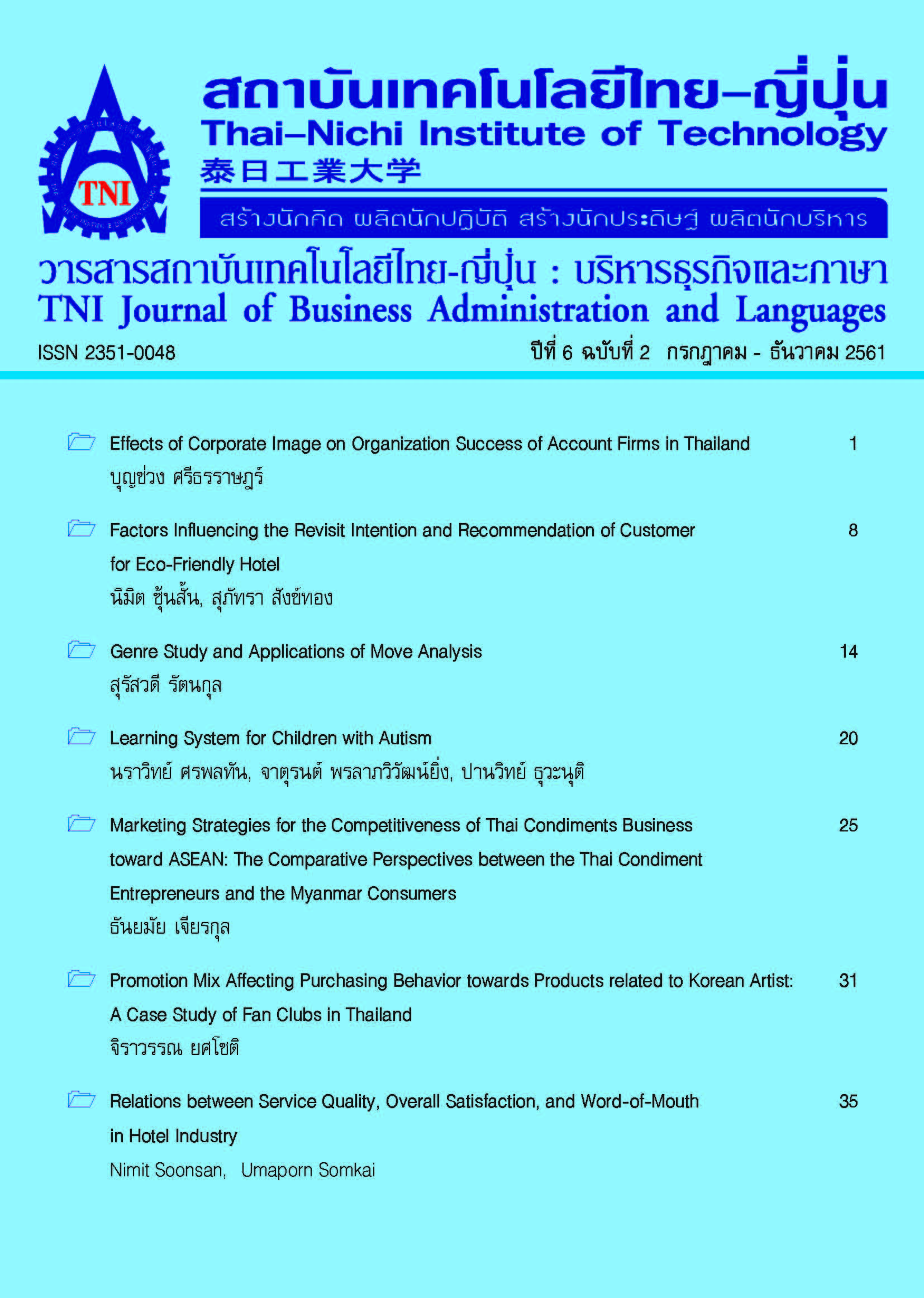The Application of Swim Lane Diagram for Business Process Improvement
Main Article Content
Abstract
This paper aims to present the result of studying and improving the production process of high gloss overlaying product of a sample company. The current production process to produce high gloss overlaying product was evaluated and simulated using a Swim lane diagram. Afterwards, the diagrams were analyzed through concepts of Problem Analysis, Continuous Process Improvement (CPI) and Business Process Improvement (BPI) to identify problems and areas of improvement. The purposes was to reduce the activities, reduce cost, improve some process efficiency and reduce product waste. The data obtained for the study revealed that the company provided a slow response to the customer in sales offerings; lost the ability to control production planning; had inefficient quality control of raw material and finish goods; and had inappropriate production process procedures that created waste and defects. The results of the business process improvement show that the activities could be reordered and reduced from 23 to 17 activities. The inspection time of raw material reduced 42.89% and the inspection of finished goods reduced to 33.33%. Additionally, the production process with corrective procedures and effective quality controls reduced product waste from 11.15% to 0%. As a result, of the process improvement the company received a reduced cost of 38,636 bath/month or 463,633 baht/year which is approximately about 19.83 % from the previous year.
Article Details
Article Accepting Policy
The editorial board of Thai-Nichi Institute of Technology is pleased to receive articles from lecturers and experts in the fields of business administration, languages, engineering and technology written in Thai or English. The academic work submitted for publication must not be published in any other publication before and must not be under consideration of other journal submissions. Therefore, those interested in participating in the dissemination of work and knowledge can submit their article to the editorial board for further submission to the screening committee to consider publishing in the journal. The articles that can be published include solely research articles. Interested persons can prepare their articles by reviewing recommendations for article authors.
Copyright infringement is solely the responsibility of the author(s) of the article. Articles that have been published must be screened and reviewed for quality from qualified experts approved by the editorial board.
The text that appears within each article published in this research journal is a personal opinion of each author, nothing related to Thai-Nichi Institute of Technology, and other faculty members in the institution in any way. Responsibilities and accuracy for the content of each article are owned by each author. If there is any mistake, each author will be responsible for his/her own article(s).
The editorial board reserves the right not to bring any content, views or comments of articles in the Journal of Thai-Nichi Institute of Technology to publish before receiving permission from the authorized author(s) in writing. The published work is the copyright of the Journal of Thai-Nichi Institute of Technology.
References
R. Seethamraju, “Business process management: a missing link in business education,” Business Process Management Journal, vol. 18, no. 3, pp. 532–547, Jun. 2012.
S. Umit Firat et al., “Managerial processes: business process that sustain performance,” International Journal of Operations & Production Management, vol. 31, no. 8, pp. 851–891, Jul. 2011.
C. Rodmorn, “An analysis of a business process in an information management system for Production planning: a case study of a metal Products manufacturer,” Master’s thesis (Technology of information system management), Mahidol university, Nakhon Pathom, Thailand, 2010.
A. Fleischmann and C. Stary, “Whom to talk to? A stakeholder perspective on business process development,” Universal Access in the Information Society, vol. 11, no. 2, pp. 125–150, Jun. 2012.
E. P. Ezeonwumelu, S. Ozuomba, and K. Constance, “Development of swim lane workflow process map for enterprise workflow management information system (wfmis) : a case study of comsystem computer and telecommunication ltd (cctl) eket,” European Journal of Engineering and Technology, vol. 3, no. 9, 2015.
W. E. Deming, Out of the crisis. Cambridge, Mass.: Massachusetts Institute of Technology, Center for Advanced Engineering Study, 1986.
S. Page, The power of business process improvement: 10 simple steps to increase effectiveness, efficiency, and adaptability, 2nd ed. New York: AMACOM, 2015.
G. E. Kalb and G. M. Masson, “Continuous Process Improvement and the Risk to Information Assurance,” Journal IEEE Software, vol. 19, no. 1, pp.84–86, Jan. 2002.
เดวิด. แมนน์, จากวัฒนธรรมแบบโตโยต้าสู่วัฒนธรรมแบบลีน. กรุงเทพฯ: อี.ไอ.สแควร์, 2551.
J. P. Womack and D. T. Jones, Lean Thinking : Banish Waste And Create Wealth In Your Corporation. New York: Free Press, 2003.


